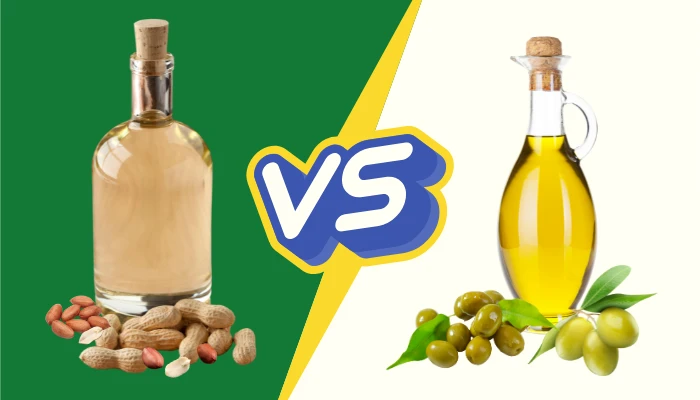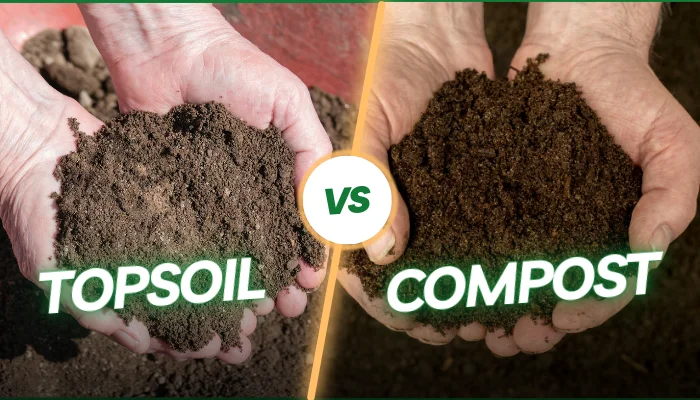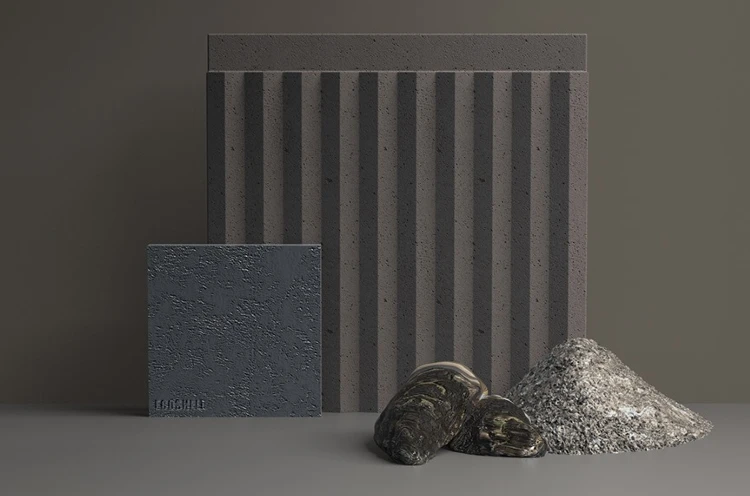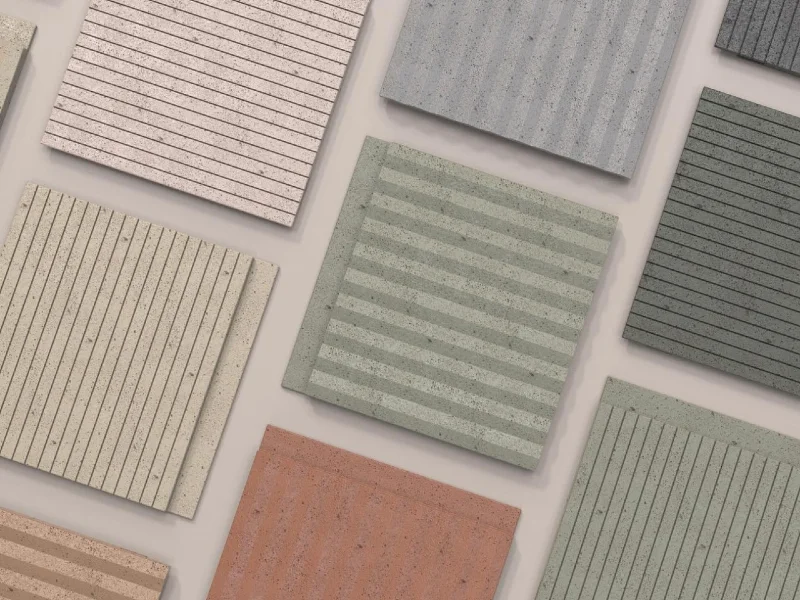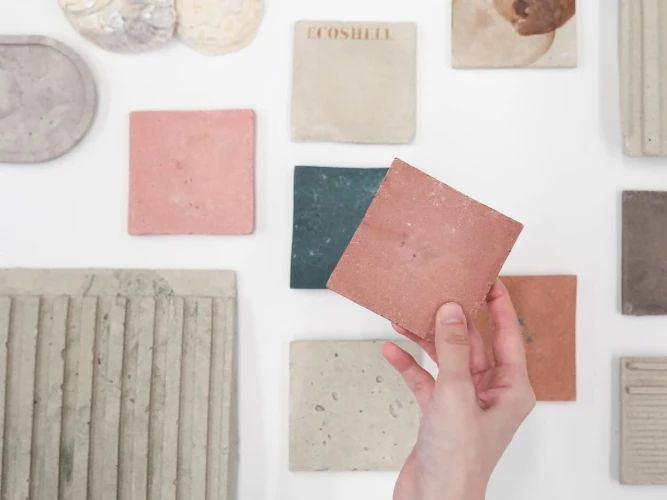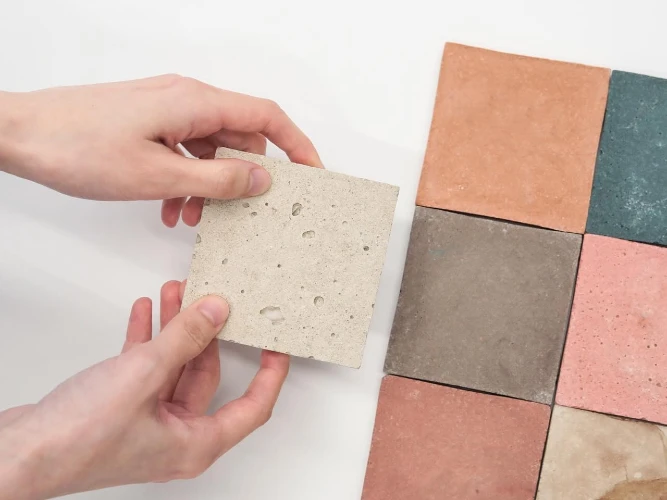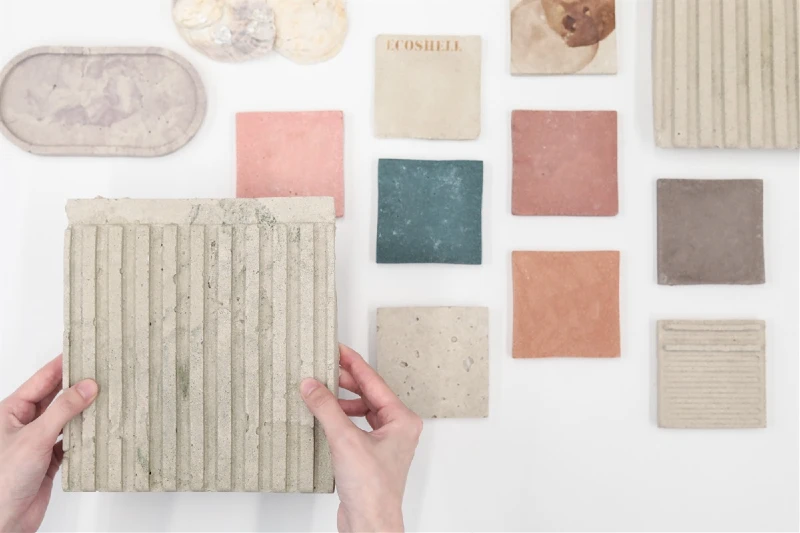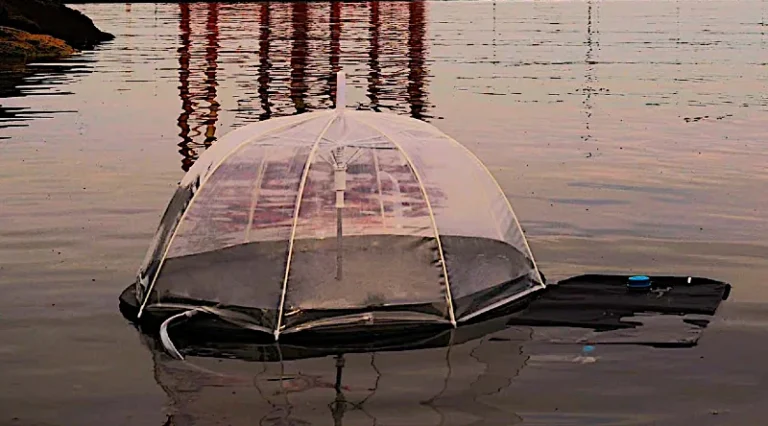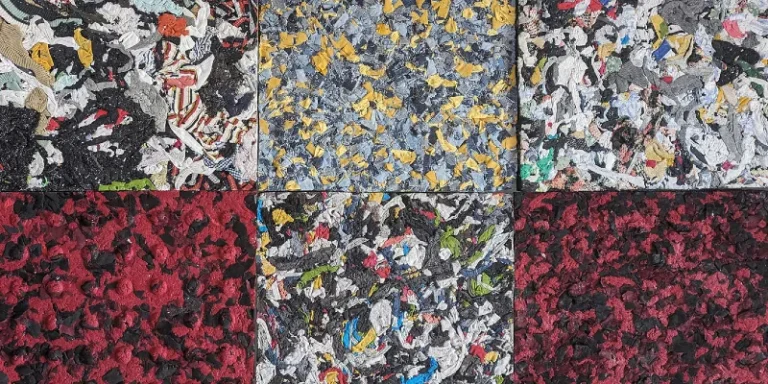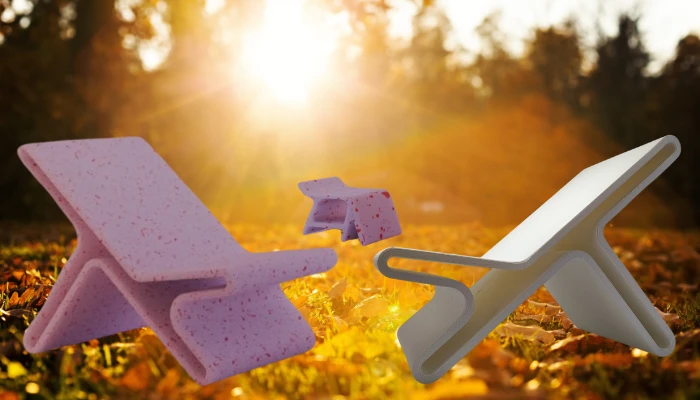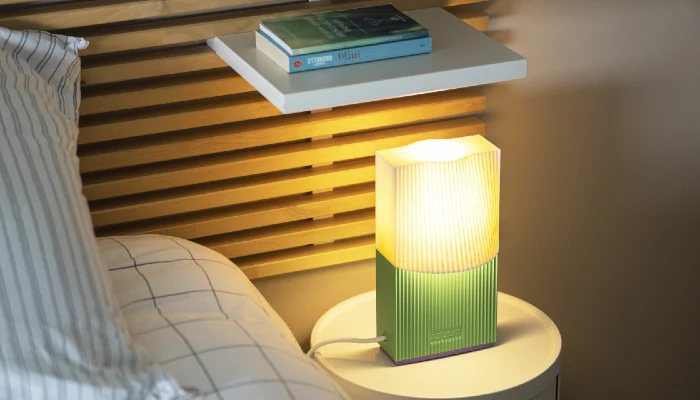Building Coastal Resilience with Tiles Made from Marine Waste
Our oceans are drowning in waste, and much of it comes from the seafood industry. Discarded oyster shells and fish bones often end up in landfills or polluting natural ecosystems.
Designer Yingfei Zhuo has reimagined this waste as a resource by creating EcoShell, a sustainable building material that turns marine waste into durable, eco-friendly tiles.
What is EcoShell?
EcoShell is a tile system made from powdered oyster shells and binders extracted from fish bones. This specific blend is strong and biodegradable. It’s a clear sustainable alternative to conventional building materials.
The tiles are designed for coastal structures, where the properties of an oyster shell play to its natural strength.
Oyster shells are resistant to salt corrosion, which gives these tiles the ability to endure harsh marine environments better than traditional materials. And they’re lightweight so they’re easy to transport and install, which reduces labor and environmental costs.
A Closer Look at the Material
- Durability: Despite their origins, EcoShell tiles are remarkably strong and long-lasting. They perform like concrete but are lighter, making them easier to work with.
- Customizable Design: The tiles can be textured and colored to fit specific aesthetic needs, providing flexibility for architects and designers.
- User-Friendly Installation: A specialized hanging system eliminates the need for nails, making installation more efficient and less damaging to surfaces.
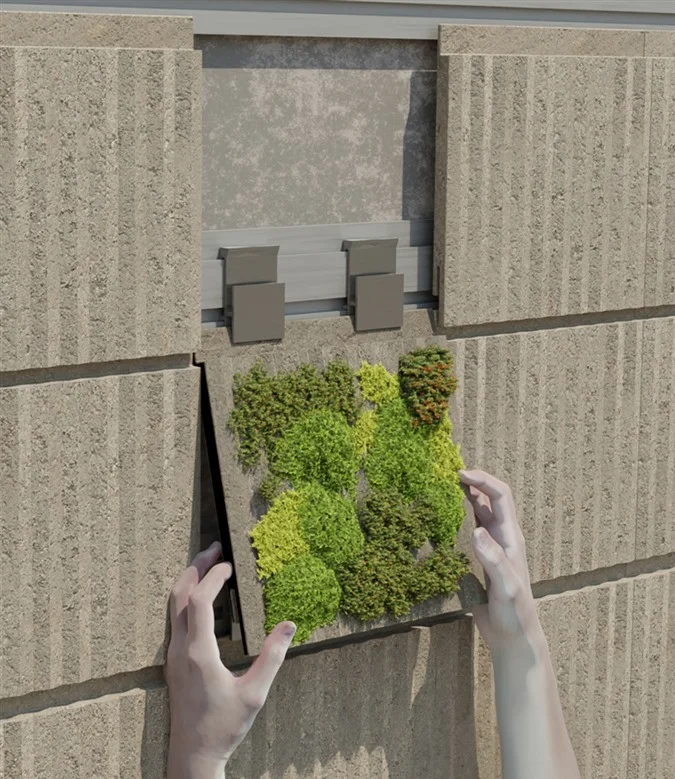
Why Oyster Shells and Fish Bones?
Oyster shells and fish bones are often overlooked as waste. The seafood industry generates millions of tons of these materials annually.
Left untreated, they can harm ecosystems by leaching toxins into soil and water.
EcoShell offers a circular solution: repurpose these materials into something valuable while reducing the burden on landfills and oceans.
Oyster shells are particularly suitable for building in coastal areas because of their natural resistance to salt and corrosion. Pairing them with fish bone binders creates a material that is both robust and environmentally friendly.
More To Discover
- Supercharging Seeds? How Rainstick’s ‘Electrical Storm’ Technology Is Electrifying Crop Growth
- Report Finds Nestlé Adds Sugar to Infant Milk in Poorer Nations, Against WHO Guidelines
- The Warming Beneath Our Feet: Warning Signs We’ve Mostly Overlooked
- How Our Salt Footprint Is Threatening Global Ecosystems And What We Can Do About It
Sustainable Benefits
- Marine Waste Reduction: Redirecting waste from landfills and oceans helps mitigate pollution and supports healthier ecosystems.
- Biodegradable Material: Unlike conventional tiles, EcoShell decomposes naturally, reducing long-term environmental impact.
- Eco-Friendly Construction: Using recycled marine waste reduces the need for virgin resources and lowers carbon emissions in the production process.
Design may not be able to change the world, but designers can.
Yingfei Zhuo
A New Way to Build
EcoShell isn’t just about reducing waste; it’s about creating materials that align with the environment.
For coastal communities, these tiles offer a practical and sustainable option for construction while protecting the fragile ecosystems around them.
They demonstrate how thoughtful design can transform discarded materials into something functional, beautiful, and beneficial.
Meet The Designer: Yingfei Zhuo
Having completed her Master of Fine Arts in Industrial Design from Parsons in March of 2024, Yingfei Zhuo has already won the A’ Design Award and a European Product Design Award.
Over the past two years, Yingfei has developed an unwavering commitment to the creativity and sustainability prospects of biomaterials.



